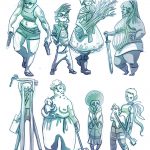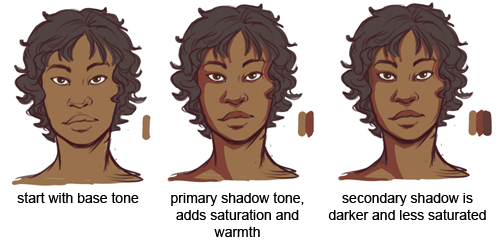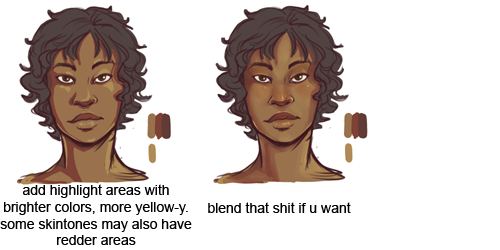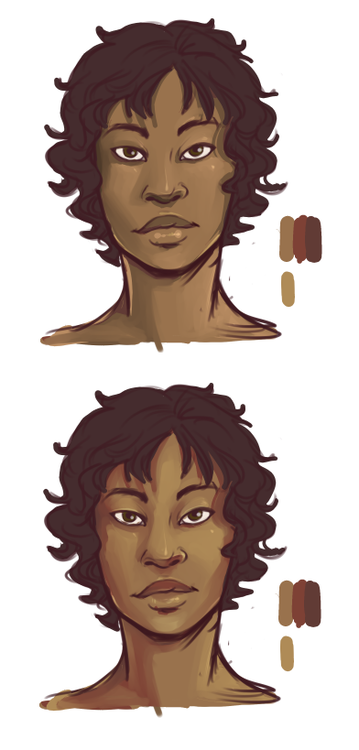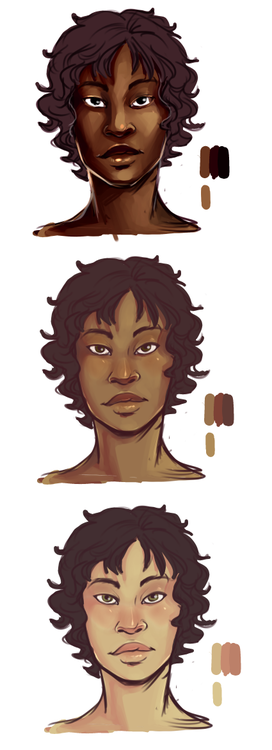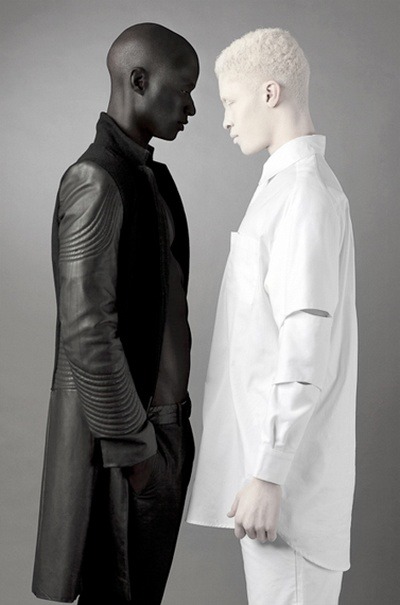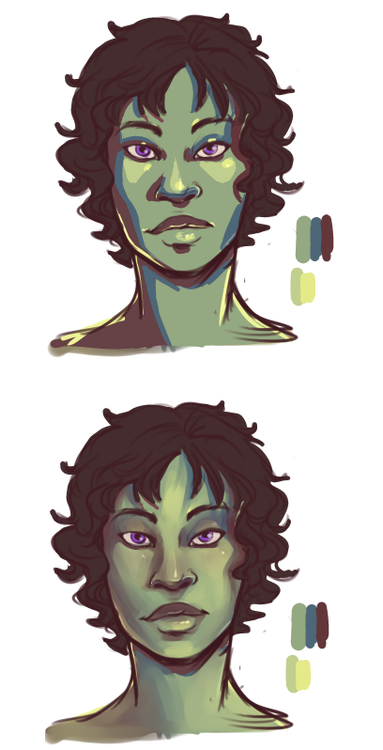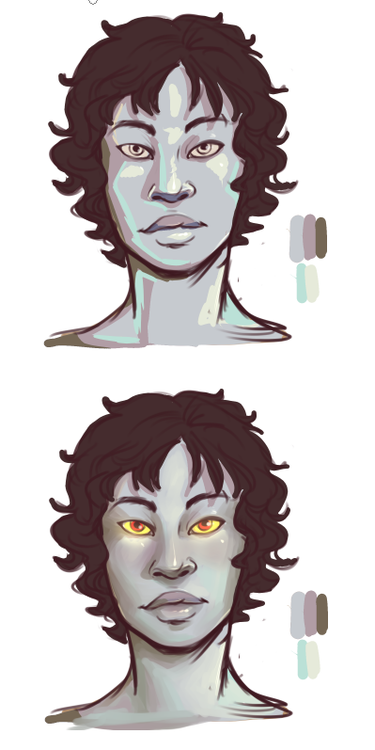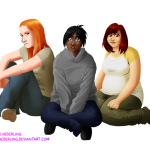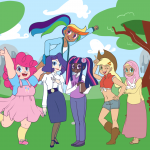So I work in video games right now and sometimes stuff just happens that makes me really not happy with the total lack of creative risk-taking in the industry |:< Specifically with regards to characters that are anything other than white, male, 30-something, scruffy, and probably named Jack.
In cases like this designing ladies is my comfort food.
1. Money wins every time
2. If more people bought games with alt. MC’s then they’d be more prevalent
3. Solution? Make a great, marketable game with a character that isn’t a straight white malePlease don’t forget that while you may disagree with it, there’s a LARGE percentage of gamers who are not only typical dudebros, but white straight males. Most of them being ignorant only buy games with Macho McBeefHulk on the front. It’s no one’s fault but the consumers.
My point is: make the game you want to play if it bothers you so much. You obviously have artistic talent. Put it to use instead of complaining about “Cis-scum”(white hetero males, myself) on Tumblr.
Hey there! I just wanted to clarify that the focus of my frustration is not the consumer, and definitely not white hetero males themselves. Dudebros are great, and the world would be a poorer place without them just as it would be without ladies.
All three of your points are super true: money wins, consumers have power, and making games that are different will help create the change we need. BUT. Creating those games that give the consumer the opportunity to vote with their money is, I have discovered, extraordinarily difficult. The big studios have a winning formula (the white male 30-something protagonist) that they know is low-risk and will likely guarantee them the safest chance at a profit.
Spending the last year employed by Microsoft, you see this kind of thing happening constantly on both smaller and larger titles. A big game coming within inches of having a main character that completely breaks this pattern, but gets shut down by executives higher up the chain who have the power to make that call when they feel a creative decision is a business risk.
Independent game developers can take those risks and make games that are outside that pattern. Big studios are locked into this rut because, as you say, money wins every time. It’s a frustrating situation, and a challenging one to solve. The issue lies in the system, the bureaucracy, and the business. Many, many artists, writers, and devs are trying hard, VERY hard, to make that game that will break the cycle. But getting it through the system without breaking the integrity of the vision is nigh impossible.
I hope this helps clarify the situation and my feelings on it a bit.
Maybe I’m just feeling feisty and defensive of my friends (and Bridget had the decency to leave you such a thoughtful response even though you 100% didn’t deserve it), but theredmages? Fuck off, man.
Using art to vent frustrations with the industry is a legitimate tactic for change. Your logic is flawed, tired, and dated. Saying “if you want it so bad why don’t you make it” is a sad diatribe parroted by people who:
- don’t actually have any goddamn idea how games are made
- cannot cite actual statistics about the games industry because that would be too much work
- cannot deal with someone else being passionate about something they clearly don’t care about
In today’s climate of internet/social media, public opinion moves mountains. Anyone worth their salt in this industry knows that. The barrier between developers and consumers is far more transparent than it’s ever been, and it suddenly means that marginalized people are in a place to voice their opinions and be heard.
Also, how the fuck do you think we make games? They don’t just sprout out of the ground fully-formed and shrink-wrapped. Trying to stomp out creativity at the source is a pretty dick move.
“But consumers don’t buy [x] so developers don’t make [x] so consumers don’t buy [x] so developers don’t make [x]!” is some seriously cyclical logic. Step back and listen to yourself. If there were games out there driven by white, male, 30-something, scruffy dudes named Jack, I would buy them up in a second– but there aren’t. You can’t preemptively assume that games wouldn’t do well without white male protagonists just because that’s been the status quo for decades.
This legitimacy of this Henry Ford quote is questionable, but the sentiment still holds true: “If I had asked people what they wanted, they would have said faster horses.”
You’re talking down to someone who actually works in the industry. Bridget literally makes video games. This is what she does. What we do. Even by your weird, exclusionary logic about who has a right to proactively critique the media they consume, Bridget is that exact person.
You are complaining on the internet about the futility of other people complaining on the internet. Shut your mouth and walk away. You’re what’s wrong with this industry.
I am so tired of the “But it’s what the consumers want!!?!!11!!” excuse when this conversation comes across my dash. Whether the media is games, comics, film, doesn’t matter. It invokes my SHE-HULK SMASH reflex.
